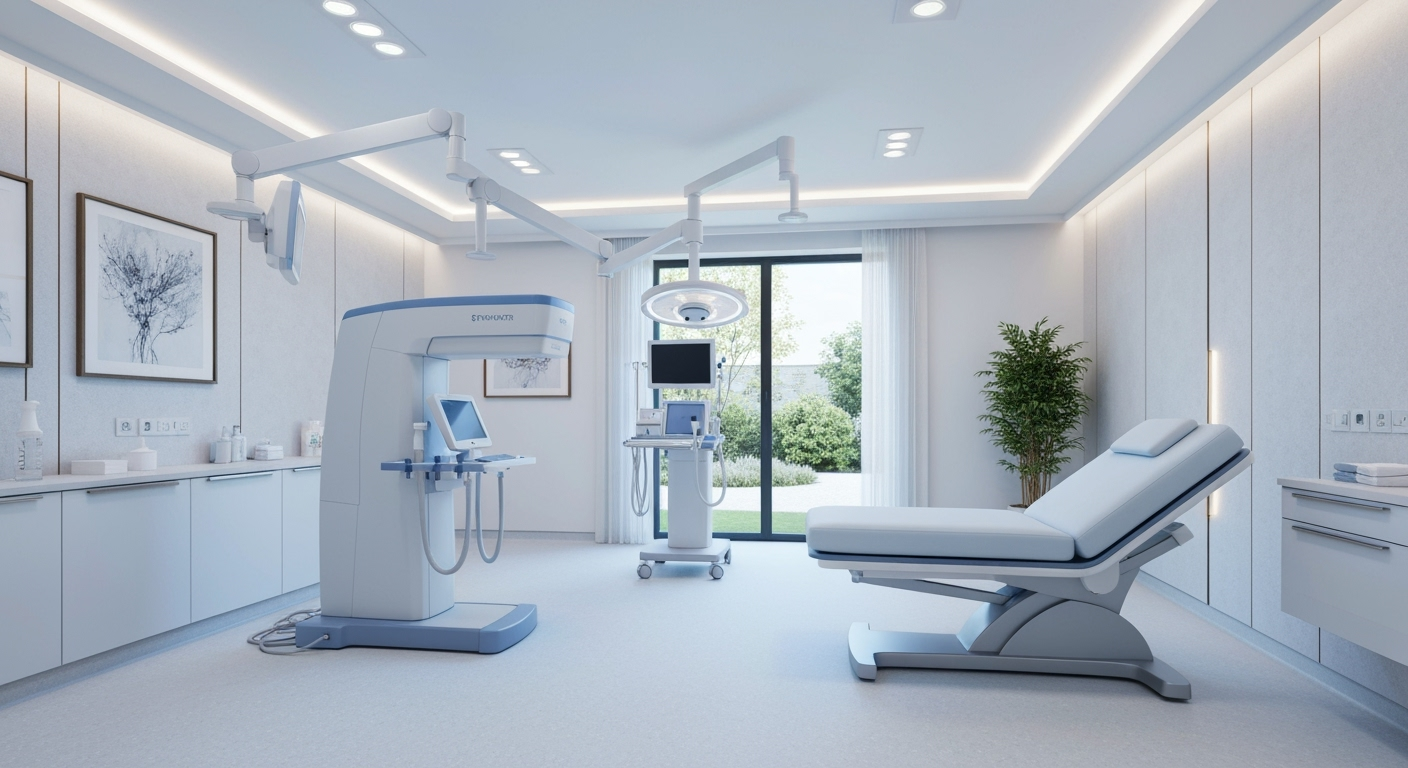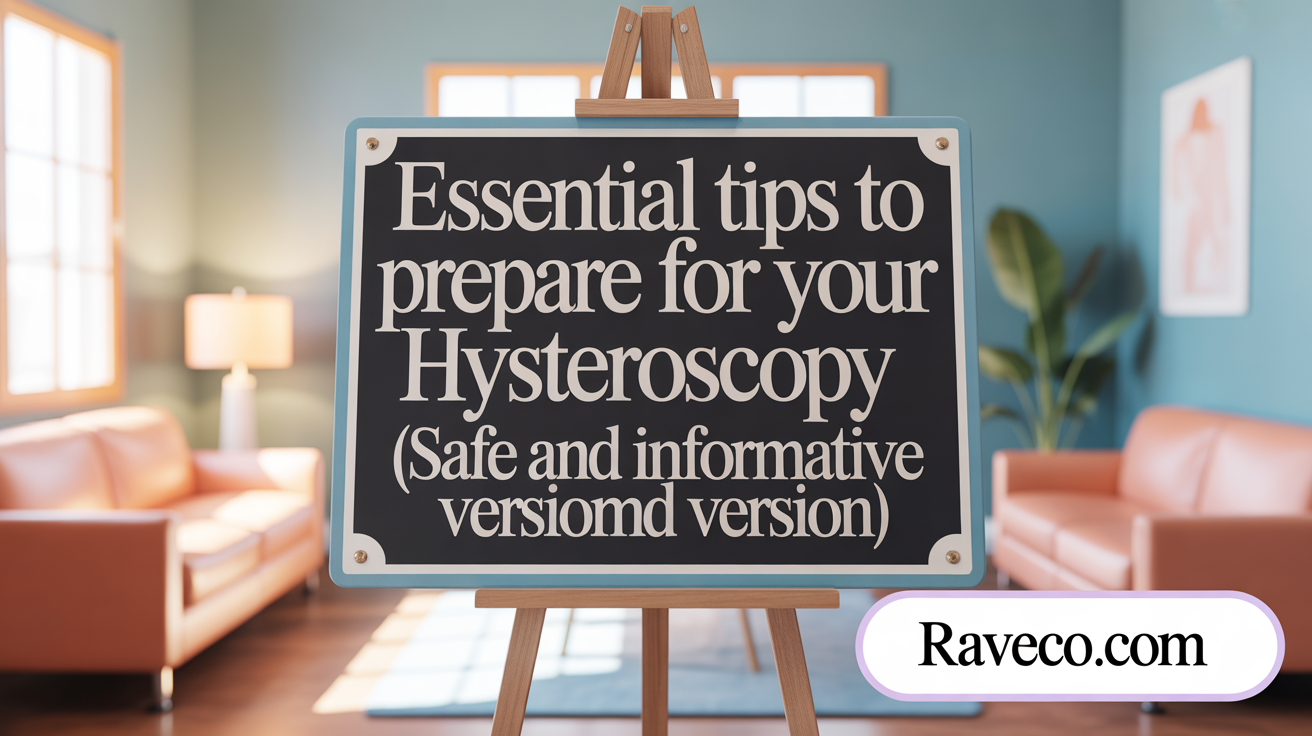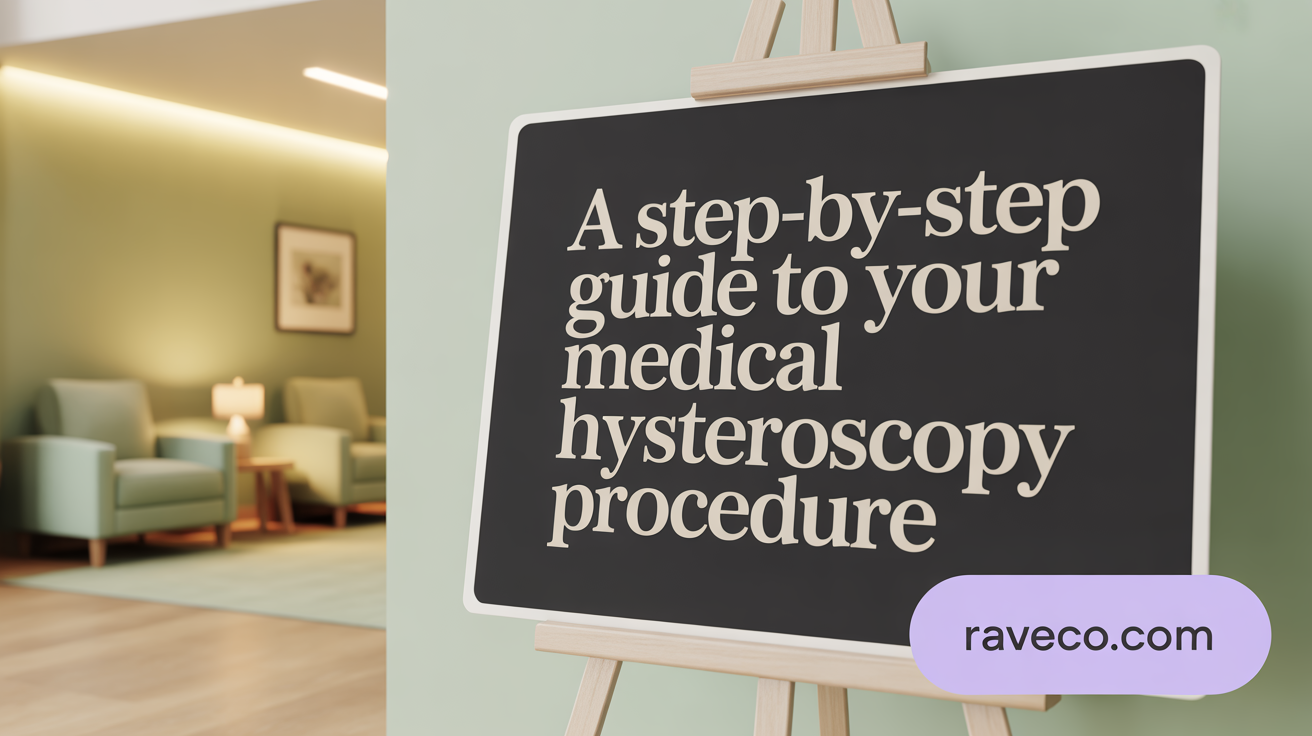Recognizing the Right Time to Address Female Infertility: Key Indicators and Expert Care in Queens

Understanding Hysteroscopy: What You Need to Know
If you are scheduled to undergo a hysteroscopy, understanding the procedure fully can alleviate anxieties and prepare you for what lies ahead. This minimally invasive procedure offers insightful diagnosis and effective treatment for various uterine issues. From preparation to recovery, this guide covers everything you need to know for a smooth experience.
What Is Hysteroscopy and Why Is It Performed?

What is a hysteroscopy and what is its purpose?
A hysteroscopy is a minimally invasive procedure that lets a doctor look inside the uterus. It involves inserting a thin, lighted tube called a hysteroscope through the vagina and cervix. This allows real-time visualization of the uterine lining and internal structures on a monitor.
The main goal of hysteroscopy is to diagnose and treat issues inside the uterus. It can help find causes of abnormal bleeding, such as heavy periods or bleeding after menopause. It’s also useful for identifying uterine abnormalities like polyps, fibroids, scar tissue, or congenital malformations. Additionally, hysteroscopy is often used to investigate causes of infertility or recurrent miscarriages.
During the procedure, the uterus may be expanded with gas or saline to improve visibility, and small instruments can be passed through the hysteroscope to remove polyps, fibroids, or adhesions. Tissue biopsies can be taken if needed. Because it is minimally invasive, most procedures have quick recovery times and low complication rates.
Diagnostic hysteroscopy versus operative hysteroscopy
Hysteroscopy can be performed for diagnosis or treatment. Diagnostic hysteroscopy usually lasts about 10-15 minutes and involves a simple examination of the uterine cavity. It helps identify structural issues without active intervention.
Operative hysteroscopy involves additional procedures, such as removing polyps, fibroids, or adhesions. It often takes 20-30 minutes and allows for direct treatment of identified abnormalities.
Both types are done with similar equipment but differ in their purpose and complexity. Depending on the condition and patient needs, the procedure can be performed under local, regional, or general anesthesia.
Conditions diagnosed and treated
Hysteroscopy is commonly used to address various gynecological conditions including:
- Heavy or irregular menstrual bleeding
- Bleeding between periods or after menopause
- Uterine polyps and fibroids
- Intrauterine adhesions (scarring)
- Congenital uterine malformations like septa
- Displaced or broken IUDs
- Abnormalities linked to infertility or recurrent pregnancy loss
It can also serve as a guided approach to remove foreign objects or perform endometrial ablation for heavy bleeding. Overall, hysteroscopy provides effective diagnosis and minimally invasive treatment options for many intrauterine conditions, enhancing patient care and outcomes.
Preparing for Your Hysteroscopy: Essential Steps

When is the best timing for a hysteroscopy?
Hysteroscopy is usually scheduled during the first week after your period, between days 5 and 12 of your cycle. This timing helps ensure the uterus is not pregnant and minimizes menstrual bleeding during the procedure. Avoid scheduling during active bleeding or menstruation to get a clear view of the uterine cavity.
What are the pre-procedure instructions?
Patients should avoid douching, tampon use, and vaginal creams or medicines for at least 24 hours before the procedure. It’s important to follow any specific instructions given by your healthcare provider, such as fasting or taking certain medications. You may need to undergo physical exams or tests beforehand, and signing a consent form might be part of the process.
How should I prepare regarding medications and anesthesia?
If your doctor prescribes medications like misoprostol to dilate your cervix, follow the instructions carefully. You should also inform your provider about all medicines, supplements, or herbs you are taking, especially blood thinners such as warfarin or aspirin. Discuss anesthesia options—local, regional, or general—and plan accordingly. If anesthesia is used, arrange transportation home since you may be advised not to drive afterward.
What about arranging transportation?
Since sedation or anesthesia may be administered, it's essential to have someone drive you home after the procedure. Plan your day accordingly, and confirm transportation arrangements in advance. Avoid scheduling activities that require full alertness immediately after the procedure.
By following these steps, you can help ensure your hysteroscopy procedure goes smoothly and safely. Proper preparation reduces risks and helps facilitate an effective diagnosis or treatment.
Step-by-Step: What Happens During a Hysteroscopy?
 A hysteroscopy is a common gynecologic procedure that allows a doctor to examine the inside of a woman’s uterus. It is often performed as an outpatient procedure with minimal discomfort.
A hysteroscopy is a common gynecologic procedure that allows a doctor to examine the inside of a woman’s uterus. It is often performed as an outpatient procedure with minimal discomfort.
The process starts with the patient being positioned on an operating table, typically in the dorsal lithotomy position. The genital area is carefully cleansed with an antiseptic solution to prevent infection. If necessary, the cervix may be dilated slightly using medications or special dilators to allow easier insertion of the hysteroscope.
Once prepared, a thin, lighted instrument called a hysteroscope is gently inserted into the vagina and through the cervix into the uterus. In some cases, vaginoscopy—an approach without the use of a speculum—is used to reduce discomfort.
To improve visualization of the uterine cavity, the doctor next enlarges the space inside the uterus using a distending medium, such as sterile saline or carbon dioxide gas. This expansion provides the surgeon with a clear view of the walls and structures within the uterus.
During the examination, the physician inspects the uterine lining, looking for abnormalities like polyps, fibroids, or scar tissue. If necessary, small instruments can be passed through the hysteroscope to take tissue samples (biopsies), remove abnormal growths, or perform other minor treatments.
The entire process typically lasts between 10 to 30 minutes, depending on whether any interventions are performed.
After completing the examination or necessary treatments, the hysteroscope is carefully withdrawn. The patient is then monitored during recovery, which usually involves resting for a short period.
Post-procedure instructions often include reporting any severe pain, heavy bleeding, fever, or foul-smelling discharge, as these could indicate infection or other complications. Most women resume normal activities within a day or two, while some treatments might require a longer recovery period.
Managing Sensations and Pain During Hysteroscopy

What sensations and pain should be expected during hysteroscopy, especially without anesthesia?
During hysteroscopy performed without anesthesia, many women report experiencing mild to moderate discomfort or cramping. The most common source of pain is the passage of the hysteroscope through the cervical canal, which can cause sharp or dull sensations. Some women might feel a brief, intense pain, particularly if the procedure involves significant interventions such as removal of fibroids or biopsies.
The pain level during a hysteroscopy varies based on individual factors. For example, women who have given birth (multiparous women) usually experience less discomfort due to the cervix being more open. Conversely, postmenopausal women may encounter heightened sensitivity and discomfort during the procedure.
To help manage these sensations, healthcare providers may use nonpharmacological techniques like vaginoscopy, which involves a smaller hysteroscope that can reduce discomfort. Many practitioners also recommend explaining what to expect during the procedure to alleviate anxiety, which can exacerbate pain perception.
Overall, understanding the potential sensations and preparing accordingly can improve the patient experience. As part of the planning, discussing pain management options—including local anesthesia—can make the procedure more comfortable.
Why is general anesthesia sometimes used during a hysteroscopy?
General anesthesia is employed in certain cases to provide a pain-free and stress-free experience, especially for more complex or longer procedures such as removing large polyps or fibroids. It induces complete unconsciousness, ensuring that the patient feels no pain and remains comfortable during the operation.
This form of anesthesia is particularly useful when extensive surgical intervention is necessary, or when the patient experiences significant anxiety or low pain tolerance. It also allows the surgeon to work more efficiently without the patient’s movement or discomfort interfering.
In outpatient settings, local anesthesia or sedation may suffice for diagnostic hysteroscopies or minor procedures. However, for operations involving larger intracavitary work, general anesthesia enhances safety and comfort. The choice depends on the procedure's scope and the patient's overall health and preferences.
In summary, while hysteroscopy can often be performed with minimal discomfort, anesthesia options are tailored to ensure optimal patient safety and satisfaction, especially during extensive interventions.
Risks, Safety Considerations, and Conditions Treated
Hysteroscopy is generally regarded as a very safe procedure, with complication rates below 1%. Most common risks involve minor issues, such as infection, bleeding, or cervical injury, which are rare when performed by experienced practitioners. Serious complications, such as uterine perforation, pelvic inflammatory disease, and adverse reactions to anesthesia, are infrequent but require prompt medical attention. Fluid overload or gas embolism, caused by excessive absorption of fluids used to expand the uterus, are also very rare but are mitigated through careful monitoring.
Before undergoing hysteroscopy, patients are screened and prepared to minimize risks. This planning includes discussing allergies, medication use (especially blood thinners), and avoiding eating or drinking as instructed. During the procedure, the use of sterile techniques and proper anesthesia management help ensure safety.
Hysteroscopy is used to diagnose and treat a variety of uterine conditions. It is highly effective for abnormal uterine bleeding, including heavy menstrual flow, irregular spotting, and bleeding after menopause. It can identify and remove polyps, fibroids, and adhesions, and correct structural issues like uterine septums.
The procedure also assists in diagnosing causes of infertility and recurrent miscarriages by revealing intrauterine abnormalities. It’s commonly employed to remove displaced intrauterine devices (IUDs), take tissue biopsies, and evaluate abnormal Pap test results.
Overall, hysteroscopy offers a minimally invasive approach with a high safety profile, making it suitable for many women needing diagnostic clarification or treatment for intrauterine issues.
| Aspect | Description | Additional Notes |
|---|---|---|
| Common Risks | Infection, bleeding, cervical injury | Rare, usually minor |
| Serious Risks | Uterine perforation, pelvic inflammatory disease | Uncommon, require prompt care |
| Rare Events | Fluid overload, gas embolism | Mitigated with monitoring |
| Conditions Treated | Polyps, fibroids, adhesions, septums, IUD removal | Widely applicable |
| Conditions Diagnosed | Abnormal bleeding, infertility, miscarriage causes | Essential in gynecologic evaluation |
Post-Procedure Care, Recovery, and When to Seek Help
What should patients expect after a hysteroscopy and how is the recovery process?
After a hysteroscopy, most women experience mild cramping, light vaginal bleeding or watery discharge, and sometimes a feeling of fullness or shoulder pain if air was used during the procedure. These symptoms typically last for one to two days. Many individuals are able to return to their normal routines, including work, within 24 to 48 hours. However, strenuous activities, sexual intercourse, douching, and tampon use should be avoided for about two weeks to minimize infection risks.
Pain management often involves over-the-counter medications such as NSAIDs or acetaminophen, and applying a warm compress or heating pad can help ease cramping. It’s important to follow your doctor’s specific instructions regarding activity restrictions, medication use, and follow-up appointments to ensure proper healing. Patients should be vigilant and seek immediate medical attention if they experience heavy bleeding, intense or worsening pain, fever, foul-smelling discharge, or other signs of complications.
What self-care steps and warning signs should be considered after hysteroscopy?
Post-procedure care includes resting when tired, gradually resuming daily activities, and avoiding activities that can introduce infection—such as douching, tampon use, and sexual intercourse—for at least two weeks. Mild cramping and spotting are normal, and using a heating pad can help manage discomfort. It is crucial to monitor for warning signs that may indicate an infection or other complications.
Warning signs requiring urgent medical consultation include soaking a pad or tampon every hour for more than two hours, severe or increasing abdominal or pelvic pain, fever exceeding 102°F (39°C), foul-smelling vaginal discharge, difficulty urinating, or symptoms like chills and nausea. Promptly contacting your healthcare provider about these issues helps prevent serious problems and supports smooth recovery.
How long might one need to take off work after having a hysteroscopy?
Recovery time varies based on the type of anesthesia used and individual healing. Many women feel capable of returning to work the day after an outpatient hysteroscopy, particularly if no general anesthesia was employed. If a local anesthetic or no anesthesia was used, resuming work and normal activities within one day is common.
However, if general anesthesia was administered, it’s recommended to rest for at least 24 hours and avoid driving or operating machinery. Mild cramping, light bleeding, or spotting can persist for a few days to a week. Adhering to your doctor’s advice about activity restrictions and monitoring symptoms ensures a smooth recovery. Seek medical advice if you experience severe pain, heavy bleeding, fever, or foul-smelling discharge, or if you have concerns about your recovery timeline.
Final Thoughts: Your Path to Recovery and Health
A hysteroscopy is a valuable, minimally invasive procedure that plays a crucial role in diagnosing and treating many uterine health issues. With proper preparation, understanding of the procedure, and adherence to post-care instructions, most patients find the experience manageable and return to their daily lives swiftly. Awareness of potential risks and symptoms that warrant medical attention ensures safety and peace of mind. Discuss any concerns with your healthcare provider to feel empowered and well-prepared for your hysteroscopy journey.
References
- Hysteroscopy: Purpose, Procedure, Risks & Recovery
- Hysteroscopy | Johns Hopkins Medicine
- What to Expect Before, During, and After a Hysteroscopy
- What to Expect During a Hysteroscopy - Diana Health
- Hysteroscopy: Procedure and Recovery Time - Dr. Seckin
- Hysteroscopy With Dilation and Curettage: What to Expect at Home
- Hysteroscopy - Brigham and Women's Hospital
- Hysteroscopy Explained: Procedure, Purpose, & What to Expect





.png)